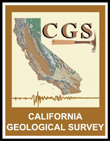
|
California Division of Mines
Speial Report 53 Igneous and Metamorphic Rocks of Parts of Sequoia and Kings Canyon National Parks, California |
MESOZOIC PLUTONIC ROCKS
(continued)
Order of Intrusions
Lack of exposure of the contact and ambiguous contact relations hinder the study of the relative ages of the plutonic bodies. In the case of a body that cuts only one unit (e.g. the Lodgepole pluton) an age relative only to the body cut can be ascertained. For these reasons it is impossible to set up a complete order of intrusion but the following relations have been determined on the basis of dike relationships, inclusion of blocks of intruded rocks, and transected foliation (photo 14). The plutons are arranged in geologic order (youngest on top), and no relationship is inferred between any of the five listed.
(1) Alaskite
Weaver Lake quartz monzonite
Big Meadow pluton
Giant Forest pluton
(2) Cactus Point granite
Elk Creek gabbro
(3) Lodgepole granite
Giant Forest pluton
(4) Tokopah porphyritic granodiorite
Giant Forest pluton
(5) Pear Lake granite
Giant Forest pluton

|
| PHOTO 14. Contact of the Tokopah granodiorite (on left) with the Giant Forest pluton. |
List (1) is an example of the increase of silicity with decreasing age. The oldest rock is chiefly a granodiorite; it is intruded by a granodiorite-quartz monzonite, which is in turn intruded by a quartz monzonite; the latest intrusive is an alaskite. The average modes of these masses also indicate this progressive increase in silicity (fig. 3). These four units make an interesting pattern; the Big Meadow pluton intruded the Giant Forest pluton, then the central area of the Big Meadow pluton was intruded by the Weaver Lake quartz monzonite, and finally the small alaskite bodies, with one exception, were intruded within or around the edge of the Weaver Lake quartz monzonite. The significance of this pattern cannot be evaluated without further mapping to the northeast, but it is possible that the succeedingly younger units came up through the central, and possibly less solidified parts of the next older unit.
| <<< Previous | <<< Contents >>> | Next >>> |
ca/cdm-sr-53/sec3b.htm
Last Updated: 18-Jan-2007